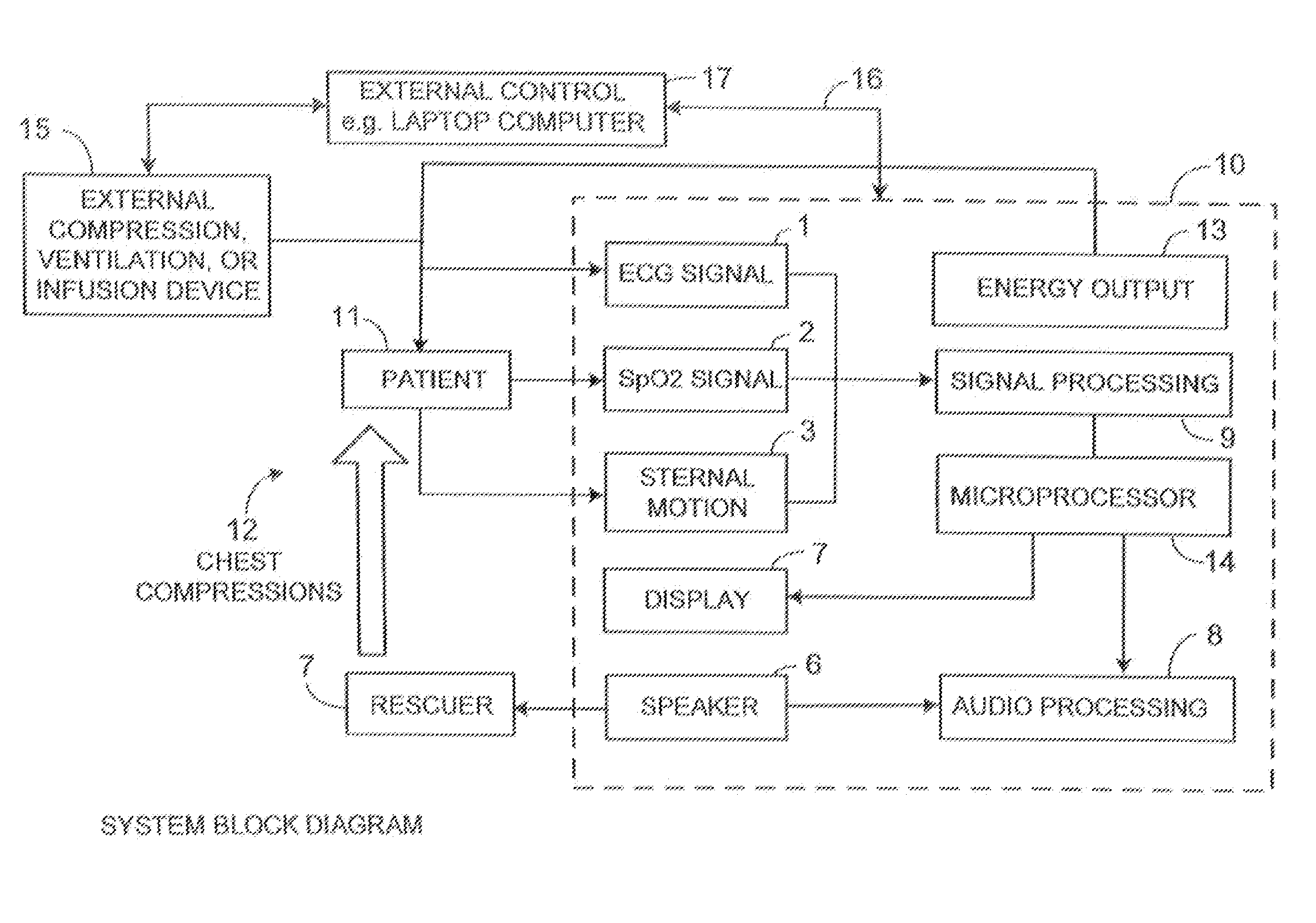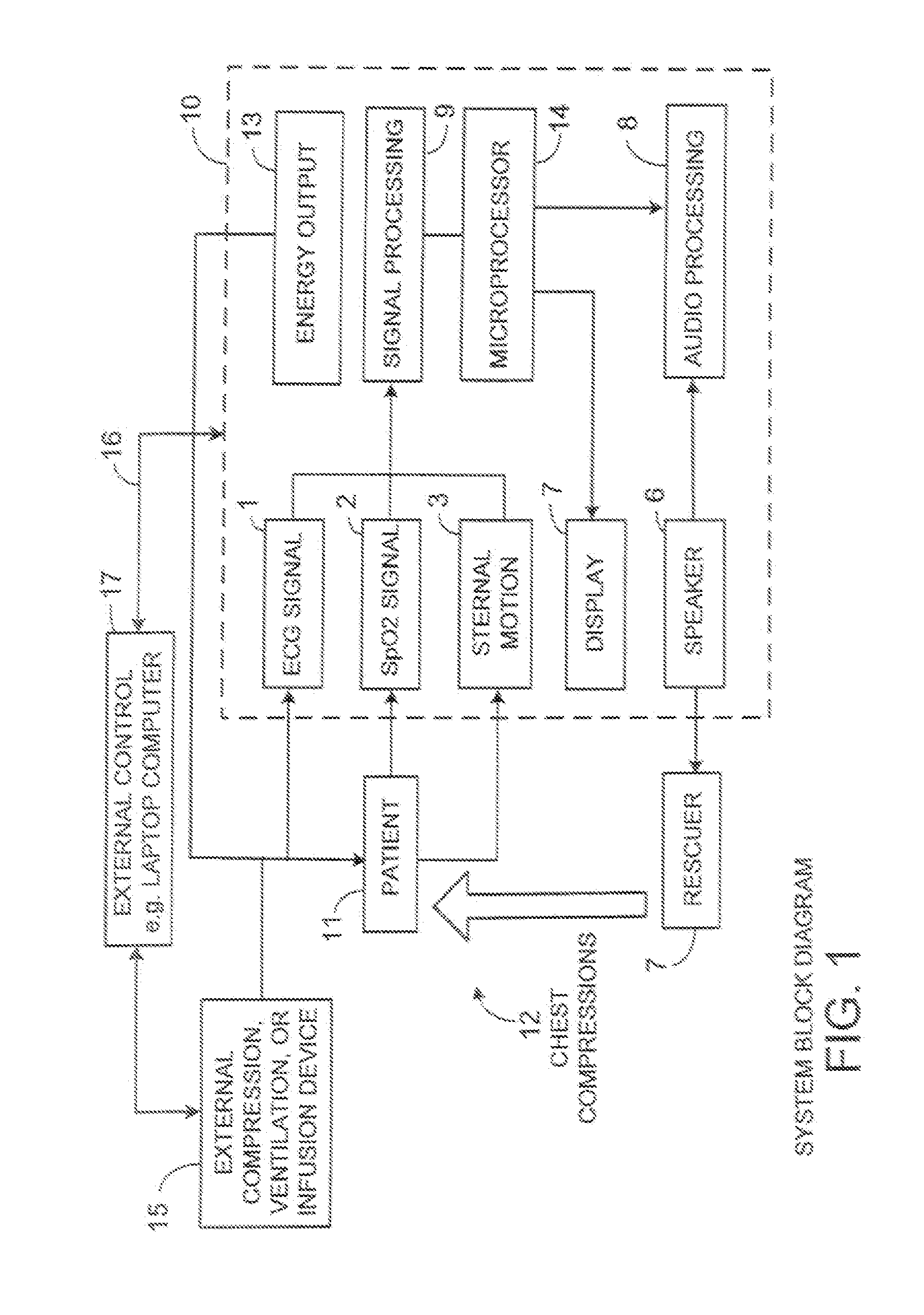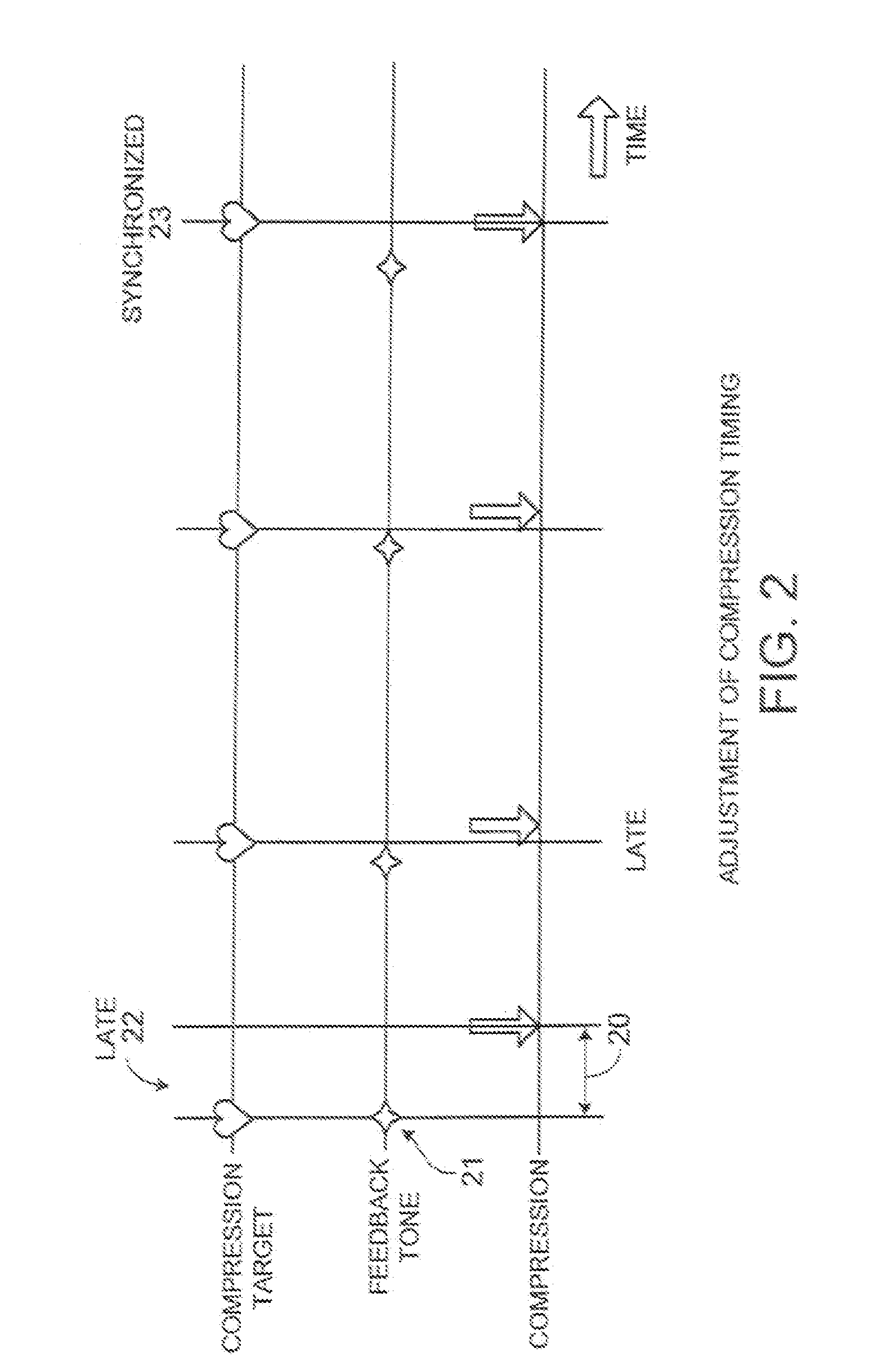Synchronization of Repetitive Therapeutic Interventions
a technology of repetitive therapy and synchronization, which is applied in the direction of therapy, heart stimulation, artificial respiration, etc., can solve the problems of caregivers rarely having the opportunity to defibrillation, the patient cannot remain alive, and the application of shocks will not help convert the rhythm, so as to improve the effect of perfusion, enhance cardiac recovery, and effective cpr
- Summary
- Abstract
- Description
- Claims
- Application Information
AI Technical Summary
Benefits of technology
Problems solved by technology
Method used
Image
Examples
Embodiment Construction
[0064]There are a great many different implementations of the invention possible, too many to possibly describe herein. Some possible implementations that are presently preferred are described below. It cannot be emphasized too strongly, however, that these are descriptions of implementations of the invention, and not descriptions of the invention, which is not limited to the detailed implementations described in this section but is described in broader terms in the claims.
[0065]Referring to FIG. 1, one or more sensors or instruments 1, 2, 3 are used to acquire physiological signals from the patient. Pre-processing of certain signals may be required to derive relevant measurements or remove artifacts. For example, CPR artifact may be removed from the ECG signal using known techniques. In one such technique, sensor 3 detects when a compression actually occurs. This sensor could be an accelerometer located in a small plastic housing that resides underneath a rescuer's hands. Using sig...
PUM
 Login to View More
Login to View More Abstract
Description
Claims
Application Information
 Login to View More
Login to View More - R&D
- Intellectual Property
- Life Sciences
- Materials
- Tech Scout
- Unparalleled Data Quality
- Higher Quality Content
- 60% Fewer Hallucinations
Browse by: Latest US Patents, China's latest patents, Technical Efficacy Thesaurus, Application Domain, Technology Topic, Popular Technical Reports.
© 2025 PatSnap. All rights reserved.Legal|Privacy policy|Modern Slavery Act Transparency Statement|Sitemap|About US| Contact US: help@patsnap.com



